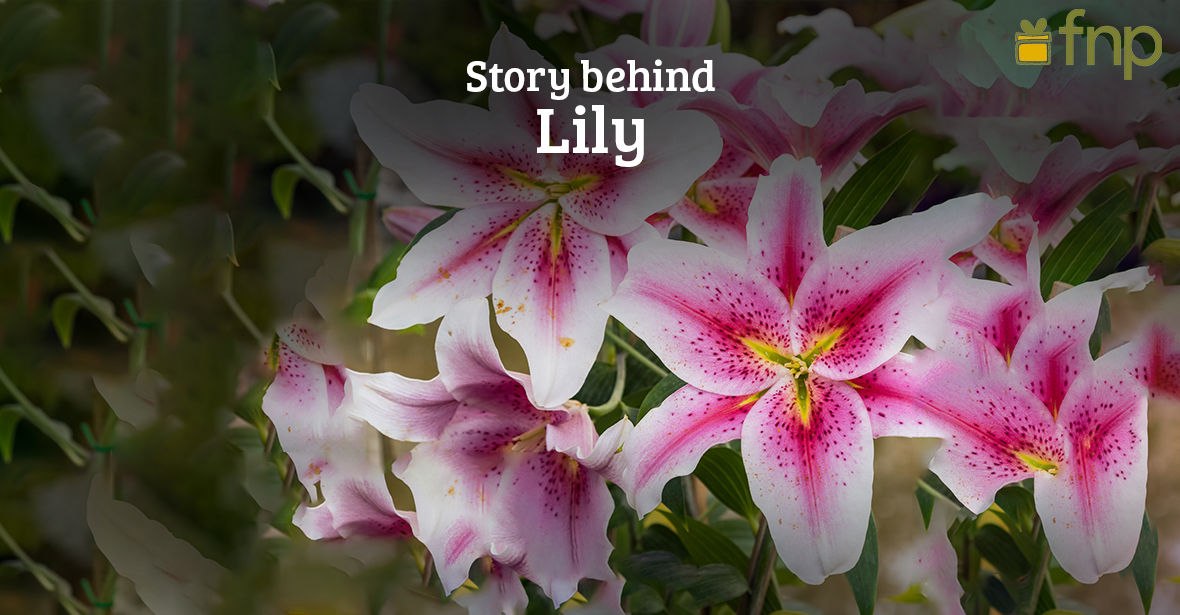What is the Origin of Lily?
- Author: Shubhankar Published: 09th Aug, 2022
Lily is a common name given to flowering plants belonging to the genus Lilium of the family Liliaceae. Lilies grow in Europe, North America, and Asia that have more than 100 species and many cultivated varieties. These are wonderful, long-lasting cut flowers that come in a variety of shades- white, pink, red, orange, and yellow.

History of Lilies
The origin of lily flower goes back to centuries ago. Read further to know how they have been treasured throughout history and celebrated as an important cultural symbol.
In Ancient Times
In Greek mythology, the Lily was the flower of Hera, wife of Zeus. The legends have it that the lily was formed from the milk of her breast. However, in Roman mythology, Venus, the Goddess of beauty was so jealous of the flower’s white loveliness that she caused the pistil to grow from its center. The lily flower was considered sacred in the Minoan civilization where lilies were found in pictures in a villa in Crete.
In the Bible
Lilies have religious significance as well, as they are mentioned in both the Old & New Testament. They are considered the symbol of purity and chastity in Christianity and became associated with the Virgin Mary. Lilies also hold great importance in Christian & Pagan traditions as they symbolize fertility.
History of Easter lily
The Easter lily is also used to decorate churches during Easter. The flower received its name from the falling of the blood of the Christ when he was on the cross. While some legends say that where the blood fall from the cross, the flowers that bloom there are known as the Easter lily.
,p>The Easter lily is native to Japan. In 1919, the Oregon soldier Louis Houghton returned home from World War I with Easter lily bulbs and shared them with fellow gardeners. The flower’s popularity grew quickly in the United States of America. But when World War II began, the lilies became scarce and expensive that lead to an increase in the American production of Easter lilies. According to the University of Nebraska, there were some 1200 lily bulb producers on the west coast by 1945.Lily Explorers
During the Victorian era, European plant explorers discovered many new species of lily. Augustine Henry, an Irish doctor turned botanist was the first plant explorer who was inclined towards the search for these exotic flowers. The Henry’s lily or the orange Lilium henry II is named after him. An Englishman named E.H. Wilson was another famous plant explorer who found so many plants in China that he was nicknamed “Chinese Wilson”. The regal lily was one of his most notable discoveries.
History about Lily Hybridization
Lilies were rare and difficult to grow before they were extensively hybridized. Jan de Graaff was a native of Holland who was responsible for many of the lily hybrids. He began his first lily experiments in 1938. In 1941, he produced Enchantment, a coral-color, upward-facing lily that was called “the most famous hybrid lily of all time” by Horticulture Magazine.
Medicinal Uses of Lilies in History
The medical texts from Elizabethan-era recommend that lily was used to treat fever, wounds, and arthritis. For a long time, the lily bulbs have been used in cooking in China. They are also the most commonly used ingredient in cooking in Shanghai.
The Symbolism of the Lily
Lilies are also considered the symbol of purity & abundance. Therefore, when Greek women are married, they wear a crown of lilies and wheat that implies purity and abundance. Lilies are also a symbol of death and in the past, people used to sprinkle them on the graves of children and the martyrdom of Saints.









